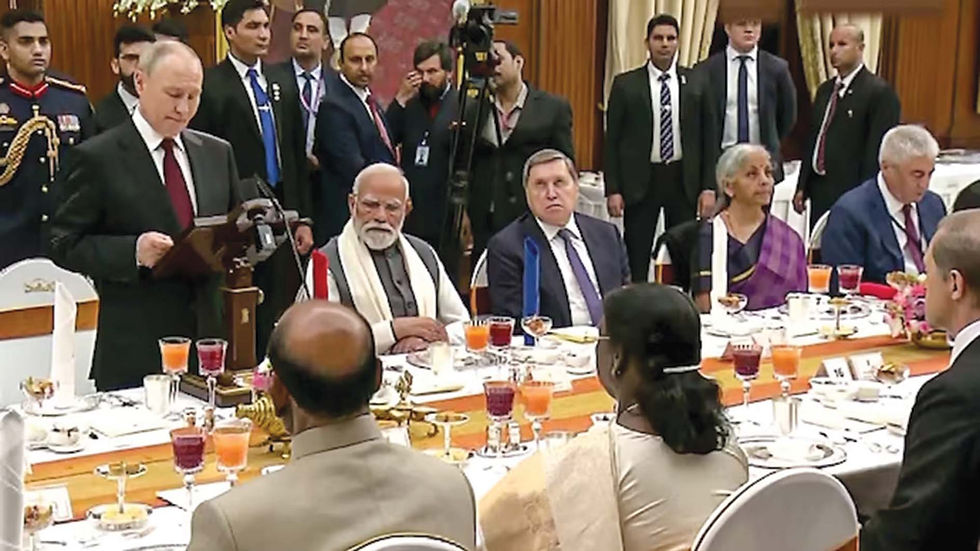China-Pakistan-Bangladesh Pact: A Strategic Shift India Must Face
- Shreyas Pannase

- Sep 10, 2024
- 3 min read
Updated: Oct 21, 2024
The proposed joint trade and security agreement between China, Pakistan, and Bangladesh is a complex web of historical, political, and economic factors. China’s ambitions align with its Belt and Road Initiative (BRI), with Pakistan as a key partner via the China-Pakistan Economic Corridor (CPEC). Bangladesh has become increasingly involved with Chinese infrastructure and energy sectors. The trilateral cooperation signifies a step reflecting shared interest in counterbalancing India’s regional dominance, compounded by historical rivalries and disputes involving India, Pakistan, and Bangladesh.
China’s ambition to expand its influence aligns with its Belt and Road Initiative (BRI). Pakistan is a key partner in the BRI and the China-Pakistan Economic Corridor (CPEC) as a flagship project. Pakistan sees alignment with China as a counterweight to India’s superior military capabilities, while Bangladesh views the agreement as an economic opportunity amidst challenges with India over water sharing and border management issues.
India faces strategic challenges from a potential rise in Chinese military presence, expanded bases, and joint intelligence-sharing. The development of dual-use infrastructure like ports and airports could enhance China’s power projection into the Indian Ocean, challenging India’s security and trade interests. Bangladesh’s evolving role might lead to increased coordination with China on maritime security, directly impacting India’s influence in the Bay of Bengal and beyond.
India’s relationships with the United States, Japan, and Australia within the framework of the Quad (Quadrilateral Security Dialogue) are likely to be tested by this development. The agreement could also strain India’s relations with ASEAN countries as the regional dynamics shift in favour of a China-centric economic and security framework. India’s strategic autonomy may be challenged, necessitating a reevaluation of its defence posture and alliances.
The potential enhancement of intelligence sharing among the three countries could undermine India’s security interests. Pakistan’s history of harbouring terrorist organisations and the recent trends of radicalisation in Bangladesh pose direct threats to India’s security and complicate India’s counter-terrorism efforts, leading to increased infiltration along the borders and a rise in asymmetric threats.
India may face isolation with fewer regional allies. This could lead to an arms race, with India seeking to bolster its conventional and nuclear capabilities to deter any potential aggression.
This agreement could disrupt existing trade routes and partnerships, forcing India to seek alternative markets and trade corridors. China’s influence in Bangladesh and Pakistan could lead to trade agreements that marginalise Indian exports and reroute goods through China-backed infrastructure. With China’s dominance in global supply chains, it could be increasingly difficult for India to compete in manufacturing and technology. The potential isolation of India from regional trade agreements could exacerbate its trade deficits and limit its access to critical markets.
India’s manufacturing sector could face additional challenges if the agreement leads to the reorientation of regional supply chains. The potential for Chinese companies to gain preferential access to markets in Pakistan and Bangladesh could further disadvantage Indian manufacturers in the textile, electronics, and pharmaceutical sectors. In addition, the Belt and Road Initiative’s expansion through Bangladesh and Pakistan could lead to the development of alternative trade corridors that bypass India, diminishing its strategic and economic significance in the region.
Bangladesh’s integration into the Belt and Road Initiative, alongside Pakistan’s involvement, could undermine India’s infrastructure projects like the North-South Transport Corridor and the India-Myanmar-Thailand Trilateral Highway. This strategic alignment with China might limit India’s ability to secure funding and partnerships, weakening its influence over regional connectivity. A China-centric economic bloc could marginalise India in South Asia, reducing its influence over trade policies and market share and potentially impacting its growth prospects through decreased foreign investment and export slowdowns.
India’s relationship with Bangladesh on border management, water sharing, and counter-terrorism could be strained if Bangladesh becomes more aligned with China and Pakistan. Increased Chinese influence could shift Dhaka’s foreign policy, making it less receptive to India’s concerns, complicating issues like Teesta River water sharing and border management.
India may struggle to assert its traditional leadership in SAARC, with a China-Pakistan-Bangladesh bloc potentially undermining India’s ability to shape the agenda. Similarly, China’s growing influence through Bangladesh could hinder India’s effectiveness in promoting regional connectivity and economic integration within BIMSTEC.
The trilateral cooperation signals a recalibration of power in South Asia, with China strengthening its foothold through infrastructure and security investments. As India grapples with potential economic marginalisation and security threats, its regional influence may be put to the test. In Part 2 of this series, we will explore how India can navigate these challenges and leverage strategic partnerships to turn the situation to its advantage.
(The writer is a Senior Research Associate, Vishwa Samvad Kendra, Mumbai. Views personal)
Next part on September 13.





Comments